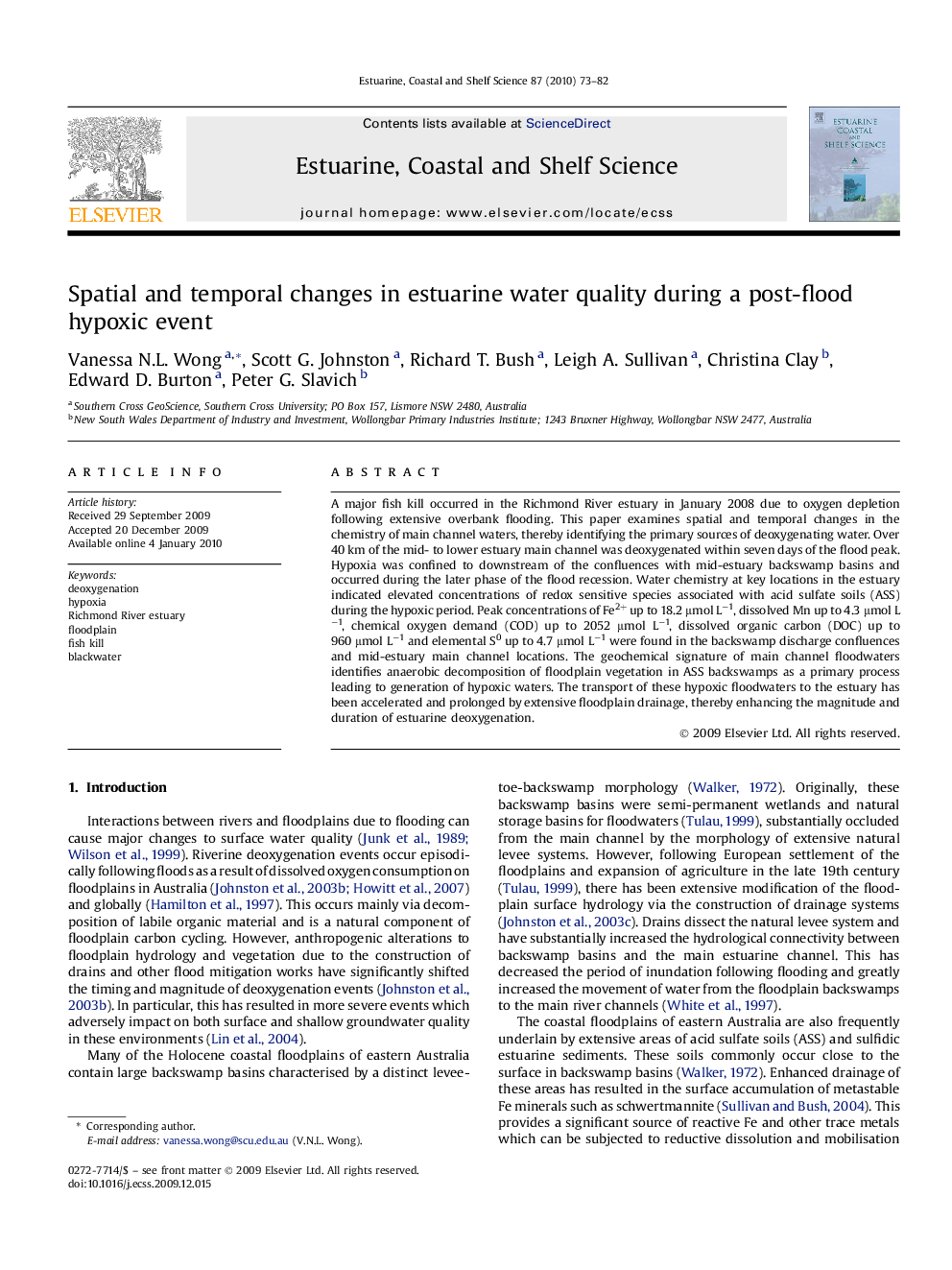| Article ID | Journal | Published Year | Pages | File Type |
|---|---|---|---|---|
| 4541090 | Estuarine, Coastal and Shelf Science | 2010 | 10 Pages |
A major fish kill occurred in the Richmond River estuary in January 2008 due to oxygen depletion following extensive overbank flooding. This paper examines spatial and temporal changes in the chemistry of main channel waters, thereby identifying the primary sources of deoxygenating water. Over 40 km of the mid- to lower estuary main channel was deoxygenated within seven days of the flood peak. Hypoxia was confined to downstream of the confluences with mid-estuary backswamp basins and occurred during the later phase of the flood recession. Water chemistry at key locations in the estuary indicated elevated concentrations of redox sensitive species associated with acid sulfate soils (ASS) during the hypoxic period. Peak concentrations of Fe2+ up to 18.2 μmol L−1, dissolved Mn up to 4.3 μmol L−1, chemical oxygen demand (COD) up to 2052 μmol L−1, dissolved organic carbon (DOC) up to 960 μmol L−1 and elemental S0 up to 4.7 μmol L−1 were found in the backswamp discharge confluences and mid-estuary main channel locations. The geochemical signature of main channel floodwaters identifies anaerobic decomposition of floodplain vegetation in ASS backswamps as a primary process leading to generation of hypoxic waters. The transport of these hypoxic floodwaters to the estuary has been accelerated and prolonged by extensive floodplain drainage, thereby enhancing the magnitude and duration of estuarine deoxygenation.
